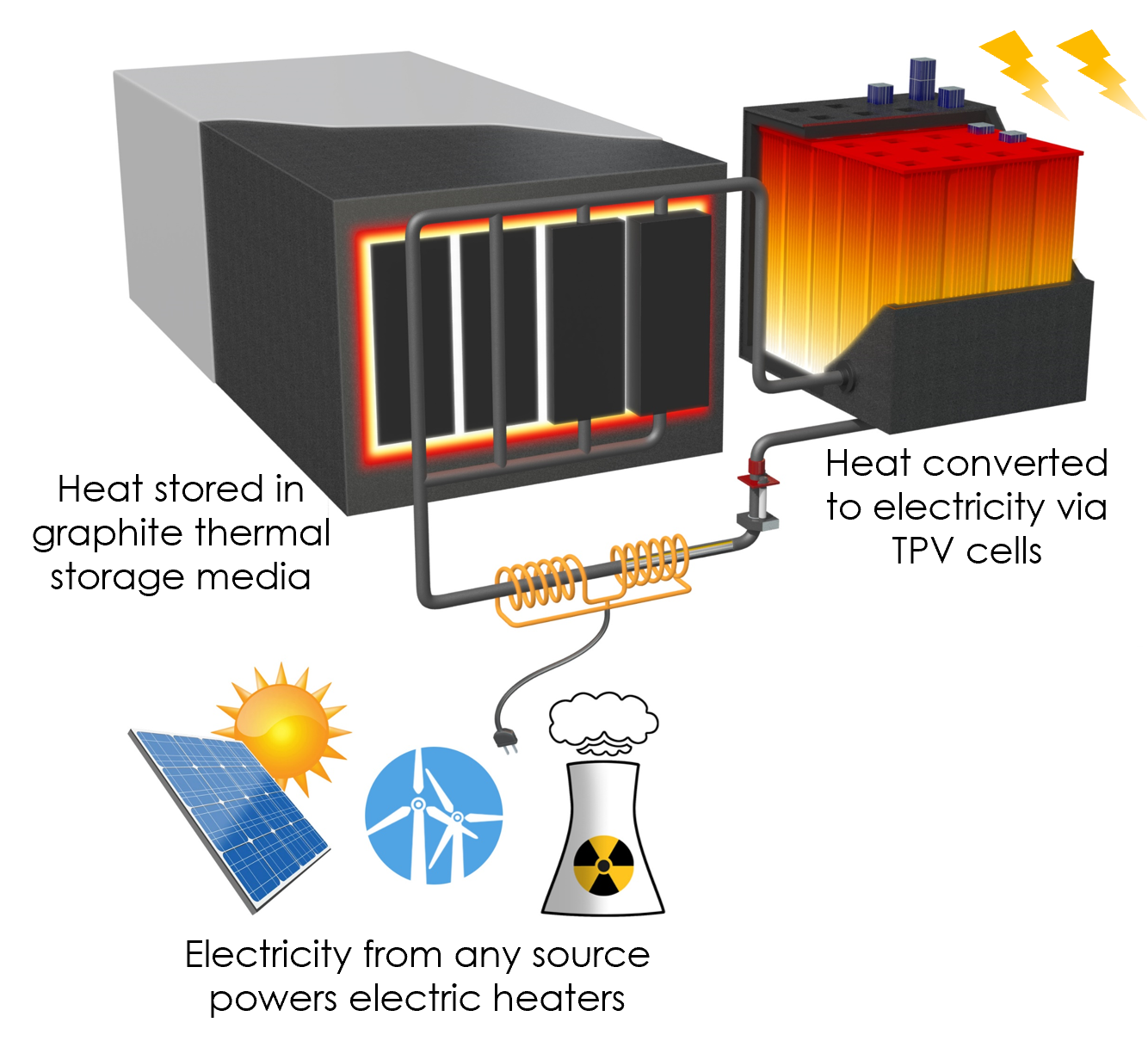Thermal Energy Grid Storage (TEGS) Concept

Overview
Thermal Energy Grid Storage (TEGS) is a low-cost (cost per energy <$20/kWh), long-duration, grid-scale energy storage technology which can enable electricity decarbonization through greater penetration of renewable energy. The storage technology acts like a battery in which electricity flows in and out of the system as it charges and discharges. However, the electricity is intermediately converted to heat and stored as heat in insulated graphite blocks because graphite is very low cost (~$0.5/kg).
To charge the system, excess electricity (for example, solar power in the middle of the day) is converted to heat using resistance heaters—just like in a space heater or an incandescent lightbulb. This heat is stored in graphite at high temperature to preserve its usefulness, since the laws of thermodynamics limit how much of the heat can be converted back to electricity (i.e., the hotter the heat is, the higher the conversion efficiency).
Then, to discharge the system when electricity is needed, the hot graphite is used to run a heat engine that generates electricity.

Converting Electricity to Heat and Storing Heat
To charge the system, excess electricity is passed through a refractory heating element with high resistance to generate heat. The heating element may be made from tungsten, just like an incandescent light bulb filament, or graphite (i.e., the main material in pencil lead).
Throughout the system, pumped liquid tin is used to transfer heat. Tin is an excellent heat transfer fluid owing to its low viscosity, high thermal diffusivity, and large range that it is a liquid (232°C – 2600°C). The heating element radiates heat to the heat transfer fluid which transfer the heat to a bank of graphite storage blocks.
To prevent heat loss, the graphite storage blocks are insulated with graphite foam above 1500°C, and a cheaper insulation at lower temperatures. Surrounding the insulation is a room temperature steel shell, sealed with polymer gaskets which acts as a gas barrier to keep oxygen out of the system, since it would react with many of the components.

Converting Heat to Electricity
When electricity is needed, heat is transferred from the graphite storage blocks and to a heat engine. A heat engine is a device that can convert heat into electricity. The most widely used heat engines are turbines, such as the steam turbines used in conventional power plants. Here, we use thermophotovoltaics (TPV) which are a different type of heat engine that has no moving parts and are very similar to solar photovoltaics.
The TPV heat engine works by directly converting light into electricity via the photovoltaic effect. The heat transfer fluid heats a bank of pipes (emitter), which radiate light to the TPV cells which then converts the light to electricity. Recently, we demonstrated a TPV conversion efficiency of 41% and efficiencies of greater than 50% are projected to be feasible. The TPV cells are actively water cooled and therefore remain cold near room temperature.
